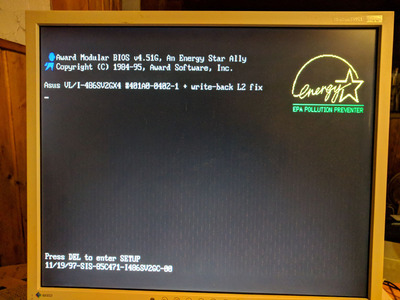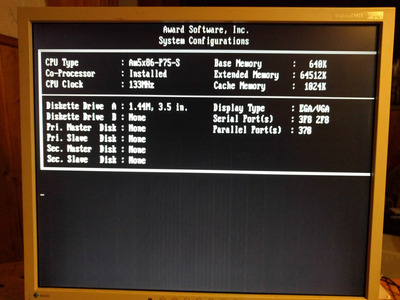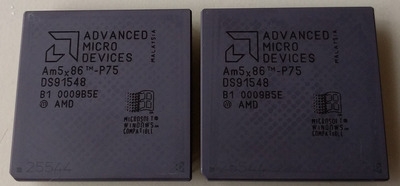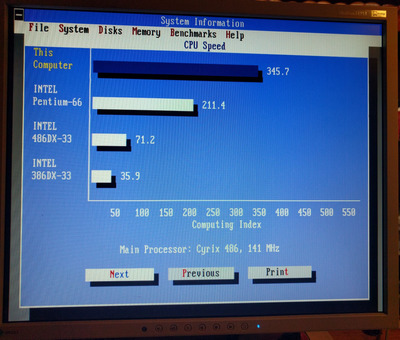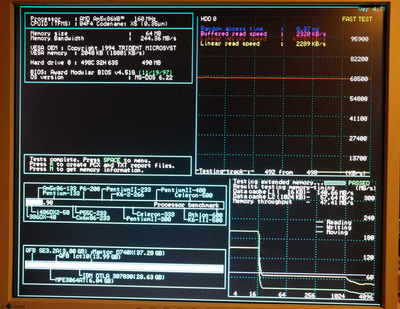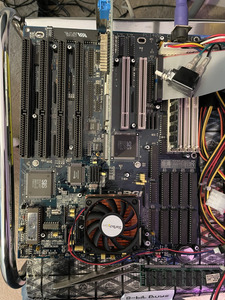Reply 1460 of 2154, by WJG6260
- Rank
- Member
I really appreciate your work with these Turbo XT builds. There aren’t enough numbers out there.
Lots of anecdotes, but hard data is hard to find (no pun intended).
I really wish there were more 8086 AT boards. I’ve only ever seen one/two but it’d be interesting to throw them in the mix.
NEC V20/V30 are quite interesting. The V20 especially. It is a very “pre-Cyrix” type upgrade and, electronically, a fascinatingly simple idea. Pretty cool that the V20 is really not a “drop-in replacement” for the 8088, being a different sort of class of hardware, but that it works so well in the same assemblies.
Out of curiosity, on these systems, is there really any appreciable difference between a WD90C00-JK and ET4000AX?
Landmark and CheckIt scores seem strikingly close, despite the clock speed and architectural differences at play.
Agreed on your points regarding building an error-free system. It’s practically impossible these days.
In some regards, it’d be nice to have a NuXT-like 486 setup that’s “modern” but made with vintage vintage parts.
The money is where things are really getting ridiculous. Even Pentium III era hardware is getting scarcer—and pricier—by the day.
The VLI and PVI are unbeatable in terms of quality and features. It appears that many can come close in terms of quality and performance, like the SuperEISA, but there are always catches. I don’t think there’s anything wrong with that, but it depends on how dedicated one is to tuning their system.
EISA, for example, has extra demands that must be met. EISA config is easy, but doing it right is important.
VLB is tricky on certain boards, acceptable on others, and flat-out perfect on some.
At the end of the day, these tests prove one thing to me: it’s all about the implementation. Various configurations of BIOSes, registers, &c. are half the battle. The rest is in the combination of the right parts/cards and the right board.
Thanks for the kind words! I have a boxed Mach64 VRAM, and I have the 2MB VRAM expansion module.
It might be joining the ranks soon. I’m getting a bit of an itchy trigger finger when it comes to the unboxing. 😀
Great point on the CPU-bound performance. I want to re-run these tests with a POD100 on a different board. Probably going to see how an SiS471/OPTi895 board does with such a setup. Diamond Stealth64 DRAM T is the gold standard, and the best of all worlds. It’s right on the tail of the ARK in DOS, right on the tail of the 964 in Windows, and easy to use. The only card that might best it is something with a Trio64V+.
I wonder if it’s possible to hack a 0ws BIOS for the Stealth64 DRAM T, like the STB PowerGraph 64V+ BIOS by Madao.
The only truly appreciable difference in terms of all of these cards is the RAMDACs, and that’s where something like a Stealth64 Video VRAM is unbeatable with a 220MHz TVP3026 part. Great for CRT usage, but these days, that’s only part of the equation.
I will say that the image quality on all of these cards is great. The 964, however, is on a different level. Crystal clear picture quality, and it’s noticeable.
That’s where cards like the ARK are a bit of a wash. The Paradise Bali32 is dim and dull; the 964 is bright, colorful, and sharp. Perhaps that’s why I like the ATi Mach cards so much—they similarly provide great 2D quality. The best 2D card for my eyes still must be the MicroLabs Tseng ET4000W32i. Warm colors, soft text, and sharp/clear picture. Would love to find the VLB version of that beast, as my Cardex ET4000W32P is decent, but not quite that good.
Tests will come with a 968, and all of these numbers are going to be re-run on a POD100.
The 968 being about 10% faster sounds right. Someone else in this thread probably knows a bit better.
The 964 really shines at higher resolutions; the Stealth64 DRAM T keeps up until you get there, but then again, what SVGA games run well on a 486?
The Vision models do feel a little more “premium,” offering VRAM-based models.
The 964 is a weird card to me. Interesting that it supported 4MB of VRAM, but seemingly not a great-selling card.
Seems that the 864/968/Trio64 are more “common,” with the Trio64 and 864 being most common.
Truth be told, with how marginal the differences are between the 864 and Trio64, the 864 might be a better buy today.
The Trio64 is undoubtedly better, however.
Regarding BIOS swaps—this is where I think we can all gain the most performance.
Miro 20SV was decent in stock form, monstrous with Diamond BIOS.
Hopefully a replacement BIOS for the 20SD shows up. Would be curious to put the 868 to the test.
Reminds me a lot of the controversy around the AGX-014 cards.
Hercules hacked their BIOS/drivers to perform better on WinBench and caught flack.
Sometimes it seems the BIOS implementation is the key.
Maybe one day a hacked 0ws BIOS will show up for some of these other cards.
